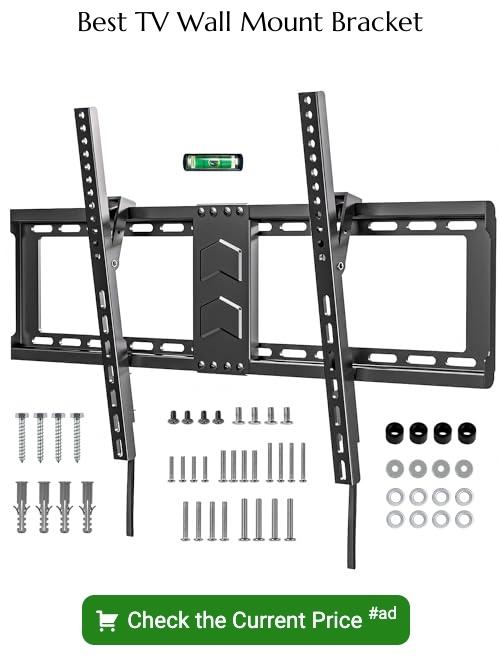Discover the pros and cons of placing a TV in front of a window, while considering aesthetics and functionality for an ideal viewing experience.
We’ve all been there – trying to find the perfect spot for our TV in the living room. But what if that perfect spot happens to be in front of a window? Is it safe to place your TV in front of a window? Will it affect your viewing experience or damage your windows? In this blog post, we’ll answer these questions and more, so you can make an informed decision on whether or not to put your TV in front of a window.
So let’s dive right into it!
Key takeaways:
- Placing a TV in front of a window can reduce eye strain and provide a unique viewing experience.
- Cons of putting a TV in front of a window include glare, limited natural light, and the risk of damage to windows and TV.
- Consider using curtains or blinds, anti-glare film, or adjusting the TV position to minimize glare.
- Assess the direction of natural light and reflective surfaces to determine the ideal placement.
- Use window treatments, such as blackout curtains or adjustable blinds, to control natural light and reduce glare.
Pros of Putting a TV in Front of a Window
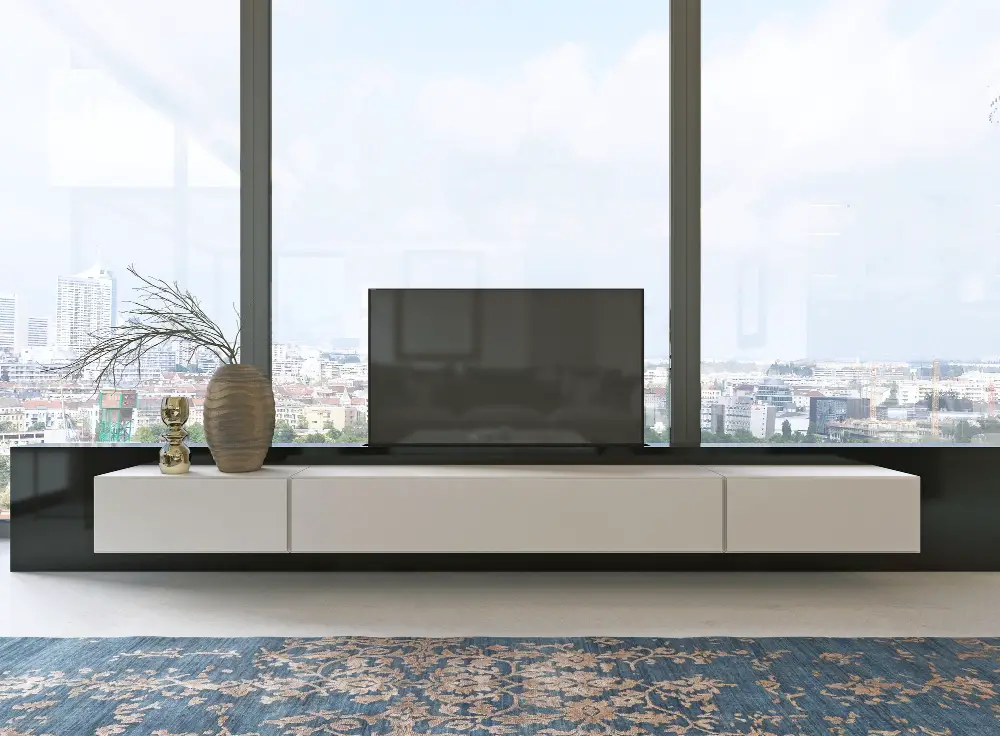
One of the main advantages is that it can help reduce eye strain and fatigue by providing natural light while watching TV. This is especially true if you’re someone who spends long hours in front of the screen.
Another benefit is that placing your TV in front of a window can create an immersive viewing experience, particularly during daytime hours when sunlight streams into your room. It’s like having your own private movie theater with stunning views outside.
Putting your TV in front of a window can free up wall space for other decor or furniture arrangements. This allows for more flexibility when designing and organizing your living space.
Cons of Putting a TV in Front of a Window
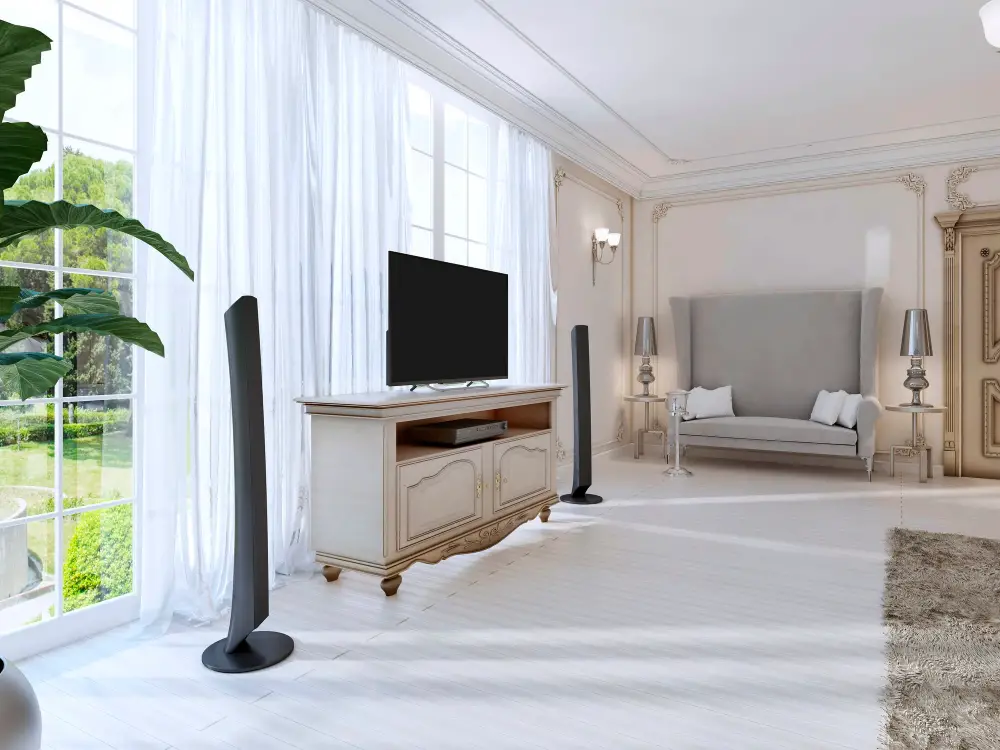
One of the most significant cons is the issue of glare and reflections on your screen. When sunlight or other light sources reflect off your TV screen, it can be distracting and make viewing difficult.
Another disadvantage is that placing a TV in front of a window can limit natural light entering the room. This could lead to increased energy consumption as you might need to turn on more lights during daytime hours.
If you have windows that open outwardly or slide horizontally, there’s always the risk that someone could accidentally hit them while walking past or adjusting furniture around them – causing damage to both your windows and television set.
Light and Glare Considerations
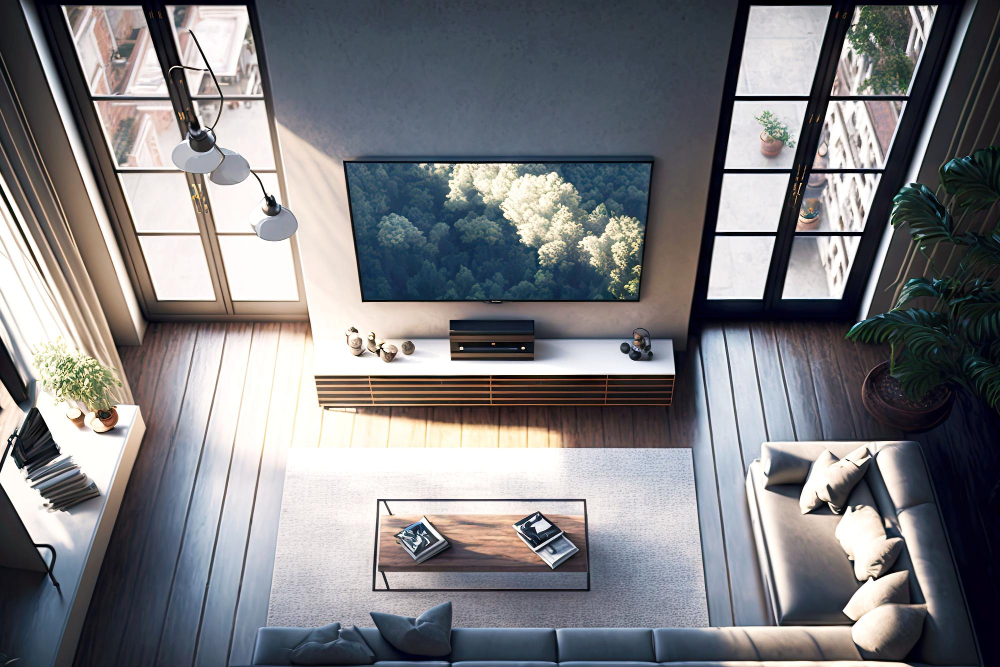
Natural light can reflect off your screen, making it difficult to see what’s happening on your favorite show or movie. This can be especially problematic during certain times of day when sunlight is at its strongest.
To minimize glare, consider using curtains or blinds to block out excess light during peak hours. You may also want to invest in anti-glare film that you can apply directly onto your TV screen.
Another option is to position your TV so that it faces away from direct sunlight. If possible, try rotating furniture around so that you’re not facing any windows while watching television.
Assessing Natural Light Direction
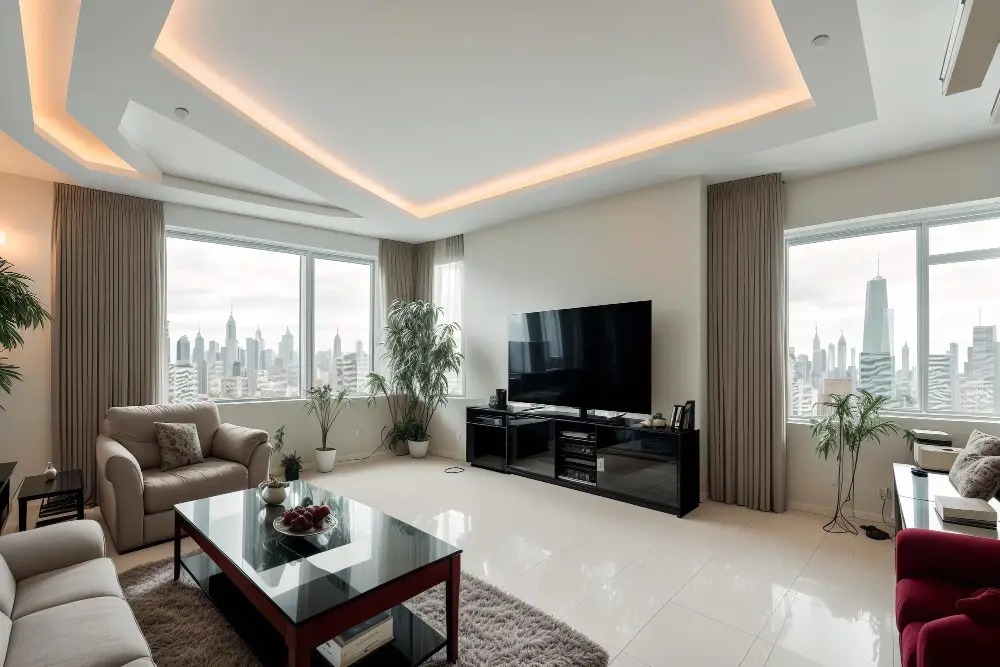
Direct sunlight can cause glare on your screen, making it difficult to see what’s playing on your TV. This is especially true during certain times of day when the sun is at its brightest.
To determine if placing a TV in front of a particular window will work for you, take note of how much natural light comes into that room throughout different times during the day. If there are periods where direct sunlight hits that area and causes significant glare or reflection on your screen, then you may want to consider other placement options.
https://www.high-endrolex.com/9Keep in mind any nearby reflective surfaces such as mirrors or glass tables which could also reflect unwanted light onto your screen.
Window Treatment Solutions

The right window treatment can help reduce glare and prevent damage to both the TV and windows.
One option is using curtains or drapes with blackout lining. These types of curtains are designed to block out light completely, making them ideal for reducing glare on your screen during daytime viewing hours.
Another option is installing blinds or shades that allow you to control the amount of natural light entering through the windows. You can adjust these treatments as needed throughout the day based on how much sunlight enters into space at different times.
Ultimately, choosing a suitable solution depends on personal preference and room layout.
Window Blinds Selection
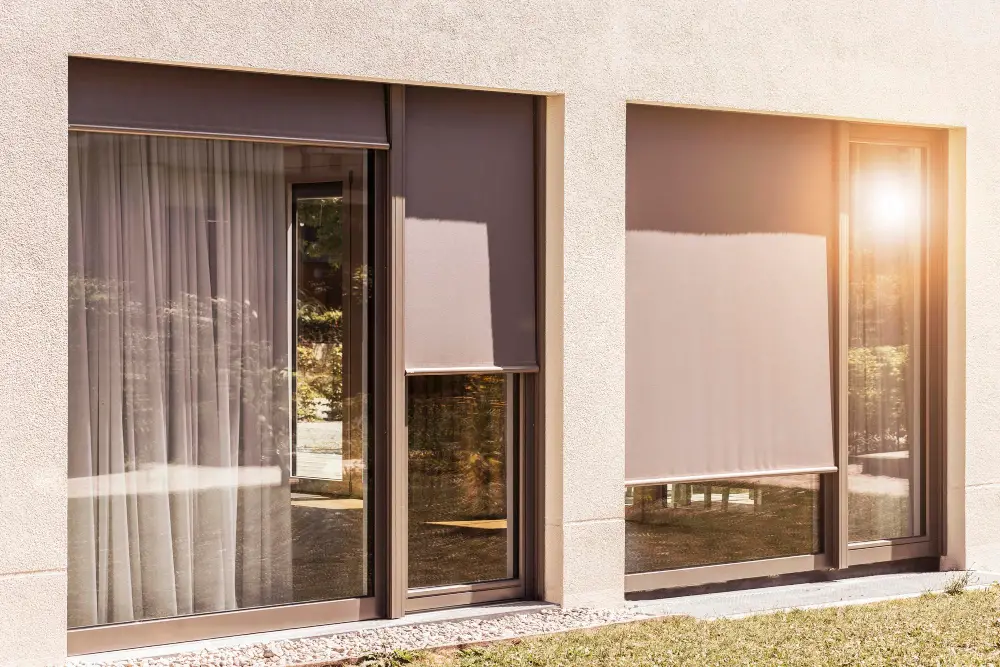
This is where window blinds come into play. Window blinds are an excellent solution for blocking out unwanted sunlight and glare while still allowing you to enjoy natural light when desired.
There are several types of window blinds available on the market today, including roller shades, vertical blinds, horizontal wood or faux-wood slat-style shutters and more. Each type has its own unique features and benefits that can help enhance your viewing experience.
For example, if you want complete darkness during daytime hours or have large windows with lots of direct sunlight exposure throughout the day then blackout roller shades may be ideal for you as they block out all outside light completely.
Alternatively, if privacy is also a concern then vertical or horizontal slat-style shutters could be perfect since they allow some natural lighting but maintain privacy by limiting visibility from outside sources like neighbors’ homes across streets etcetera.
Utilizing Window Tint
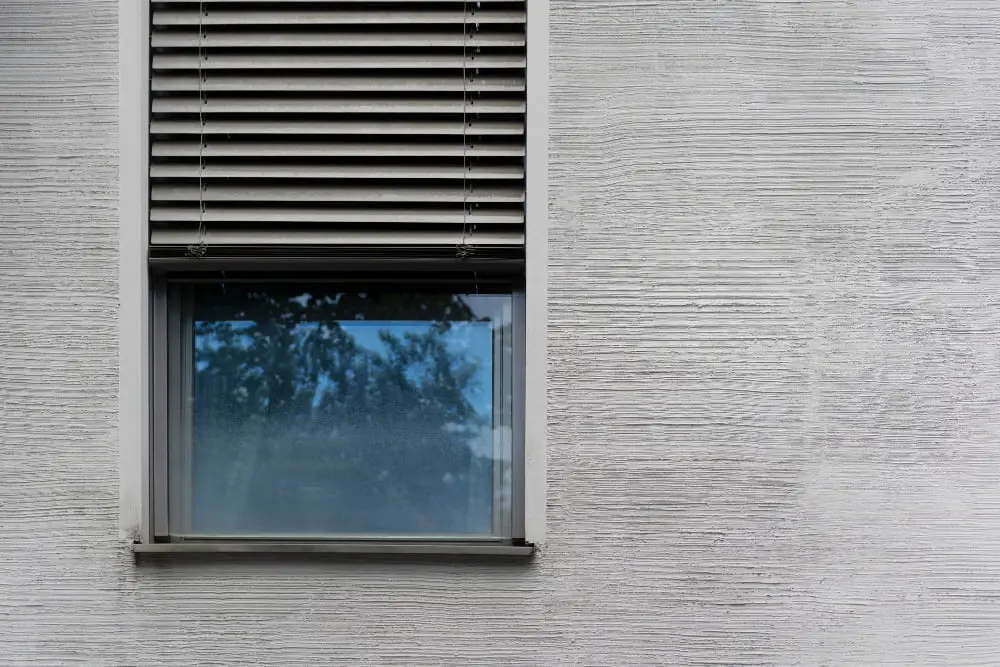
Window tint can help reduce glare and block UV rays that can damage your furniture or electronics. It’s also an affordable option compared to other window treatments.
Window tints come in different shades, so it’s important to choose one that doesn’t darken the room too much but still provides enough protection against sunlight. You should also consider hiring a professional installer who has experience with applying window tints correctly.
While using window tint is an effective way of reducing light and heat coming through windows, it’s not always recommended if you have double-pane windows as this could cause thermal stress leading to cracks or even breakage of glass panes due to uneven heating caused by direct sunlight on only one pane.
Mounting and Positioning Tips
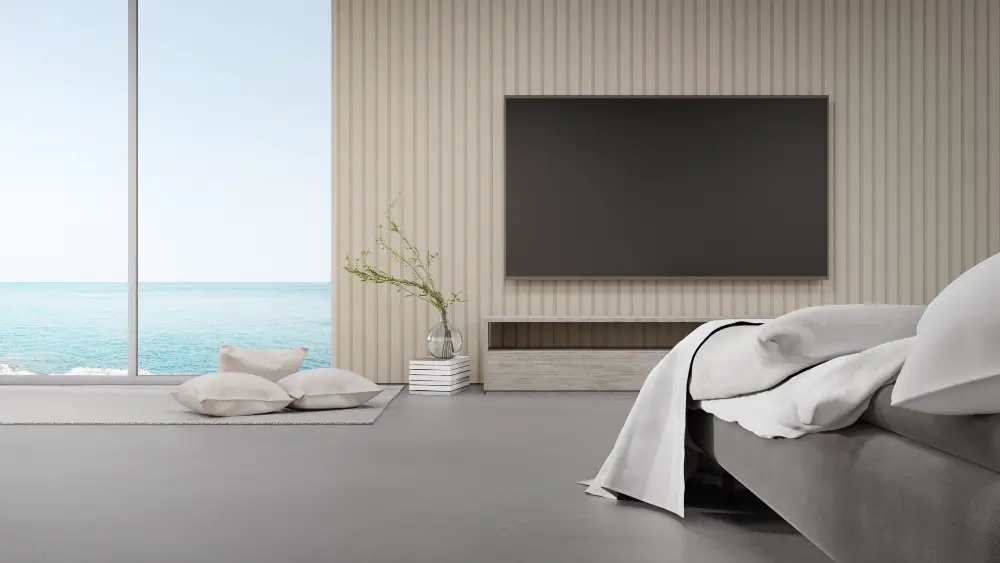
First, make sure that the mount you choose is sturdy enough to hold the weight of your TV. You don’t want it falling off and damaging either the window or your television.
Next, consider the viewing angle and comfort level for those watching. Mounting too high or too low can cause neck strain or discomfort while watching for extended periods.
Ensure that there is enough distance between the TV screen and any windows behind it to prevent glare from natural light sources. This will help reduce eye strain when viewing content on bright days.
Lastly, take into account any safety precautions necessary when mounting near windows such as ensuring cords are properly secured away from potential hazards like blinds or curtains which could catch fire if they come into contact with hot electrical components.
Viewing Angle and Comfort
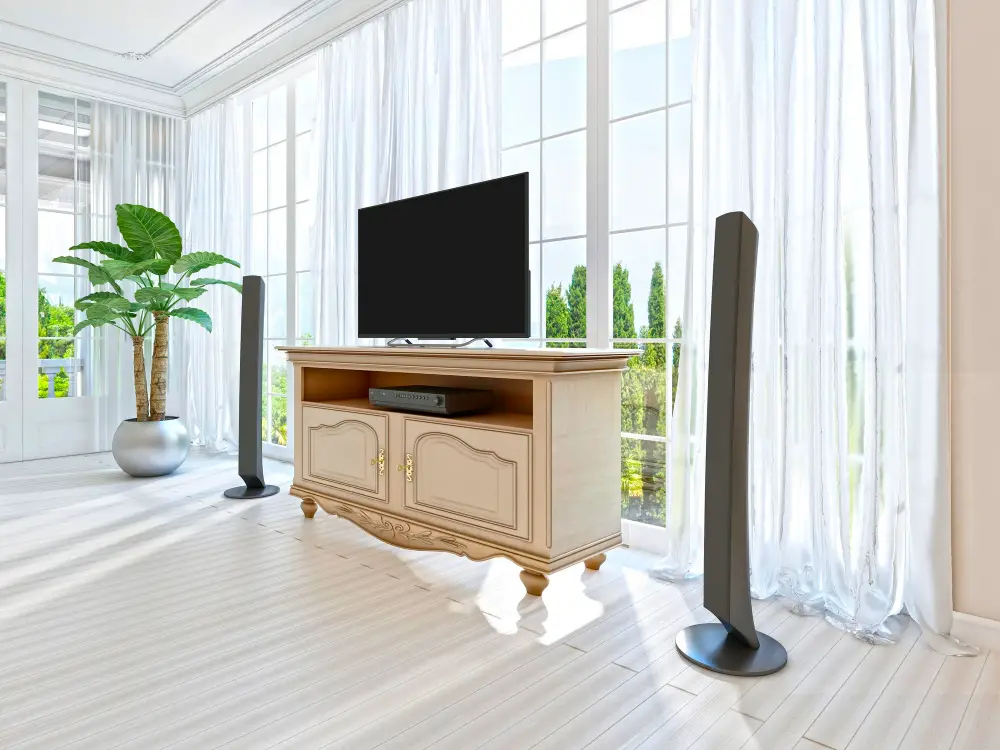
If you decide to place your TV in front of a window, you need to ensure that the viewing angle is comfortable for everyone in the room. The ideal height for a TV screen is at eye level when seated on your couch or chair.
If you have a large window behind your television, consider mounting it higher than usual so that viewers don’t strain their necks looking up at an awkward angle. You may also want to invest in an adjustable mount so that you can tilt and swivel the screen as needed.
Another important factor is distance – how far away should viewers sit from the screen? A general rule of thumb is about 1-1/2 times the diagonal measurement of your television set. For example, if you have a 50-inch TV, then viewers should be sitting approximately 75 inches (or just over six feet) away from it.
Right Height and Distance
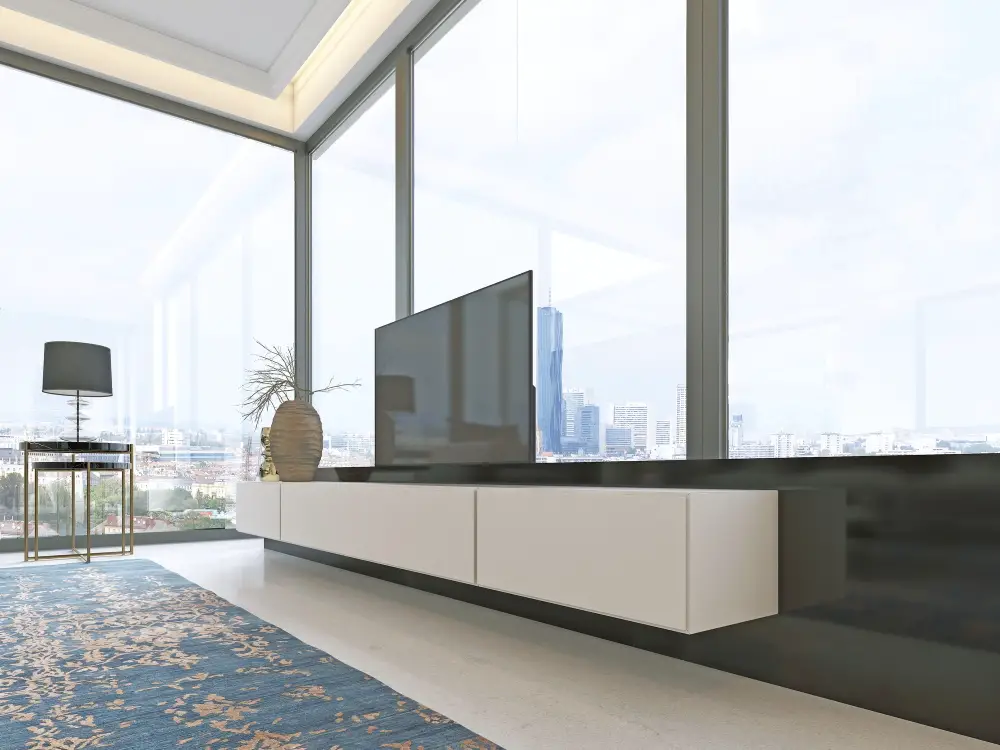
The ideal height for your TV should be at eye level when you’re seated on the couch. This will help prevent neck strain and ensure that you can comfortably watch your favorite shows without any discomfort.
In terms of distance, it’s recommended that you sit at least 1.5 times the diagonal length of your screen away from the TV. For example, if you have a 50-inch screen, then sitting around 6-8 feet away would be ideal.
It’s also important to consider how far back or forward to position your couch in relation to both the window and television set up so as not to compromise comfort or viewability.
Couch Positioning
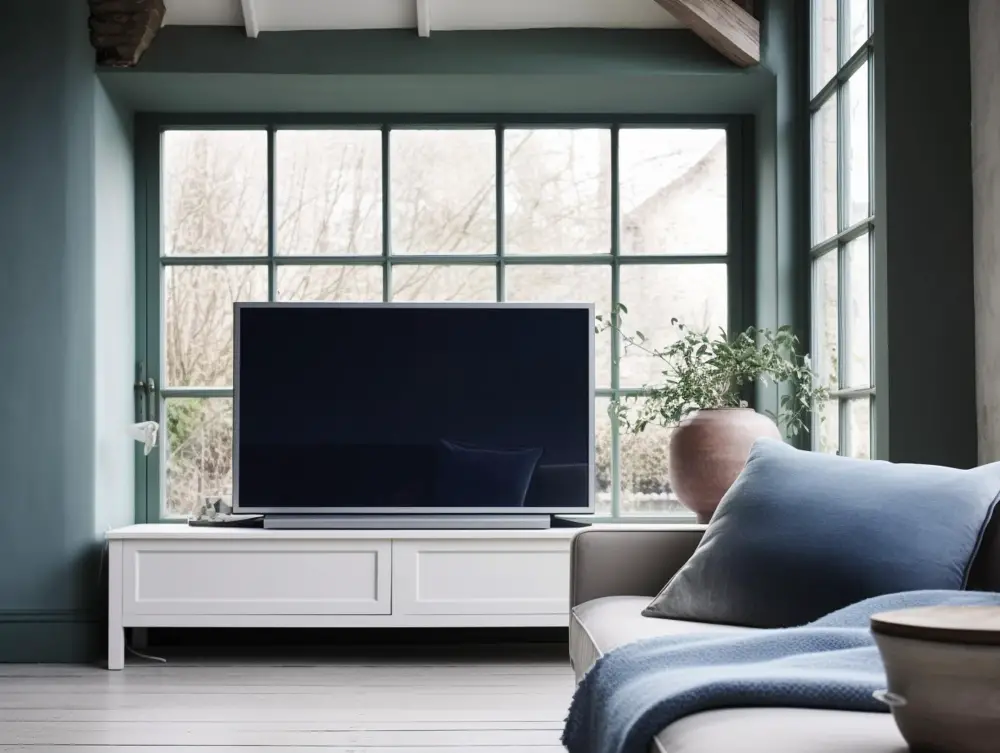
You want to ensure that you’re not straining your neck or eyes while watching TV. The ideal position for the couch would be perpendicular to the window and at least 6-8 feet away from the screen.
If you have limited space and can’t move your couch further back, consider mounting your TV higher on the wall so that it’s at eye level when sitting down. This will help reduce any discomfort caused by looking up too much.
Another option is using swivel mounts that allow you to adjust both horizontally and vertically, giving you more flexibility in finding an ideal viewing angle without having to move furniture around constantly.
Remember also; if there are multiple windows in one room where TVs are placed, try positioning them opposite each other rather than side-by-side as this may cause glare issues during certain times of day due to sunlight coming through different angles throughout daylight hours.
Safety Precautions for TV and Window

You don’t want to risk damaging your windows or causing harm to yourself or others. One important safety precaution is ensuring that the TV is securely mounted and won’t fall off its stand or wall mount.
Make sure that any cords are properly secured and out of reach from children and pets.
Another potential hazard when placing a TV in front of a window is overheating. Direct sunlight can cause the temperature around your electronics to rise quickly, which could lead to damage over time if not addressed properly.
To prevent this issue, consider installing an air conditioning unit near the area where you plan on putting your television set up.
Lastly, always keep in mind how opening/closing windows may affect both viewing experience as well as electrical components such as cables running through open spaces between frames etc., so take extra care when operating them while watching television nearby.
Preventing Overheating With AC
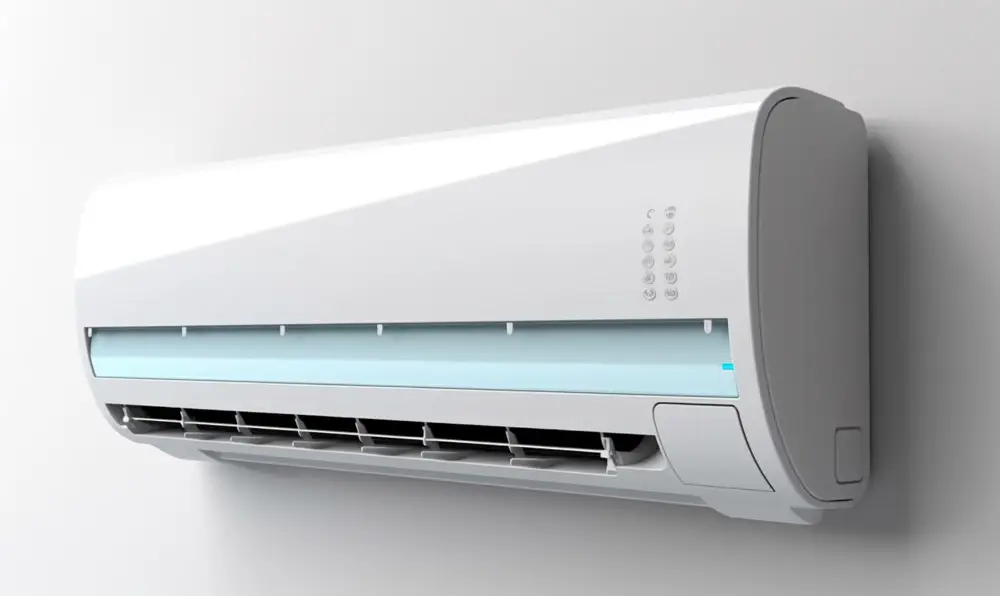
Direct sunlight can cause your TV to overheat and malfunction, which is why you should take steps to prevent this from happening. One way to do so is by using an air conditioning unit or fan in the room where your TV is located.
This will help regulate the temperature and keep your electronics cool even on hot summer days.
Make sure that there’s enough space around both the AC unit and television set for proper ventilation. If possible, place them near each other but not too close as they may interfere with one another’s performance.
Fans for Cooling

One solution is using fans for cooling. Fans can help reduce glare and heat from the sun, making it easier to see what’s on the screen without straining your eyes.
Ceiling fans are an excellent option as they circulate air throughout the room and keep temperatures down during hot summer months. You can also use portable or standing fans that you can move around depending on where you’re sitting.
When choosing a fan for cooling purposes, make sure it doesn’t interfere with your TV viewing angle or block any natural light coming through the window. Ensure that there is enough space between the fan blades and ceiling so that they don’t hit each other when rotating.
Electrical Outlet Availability
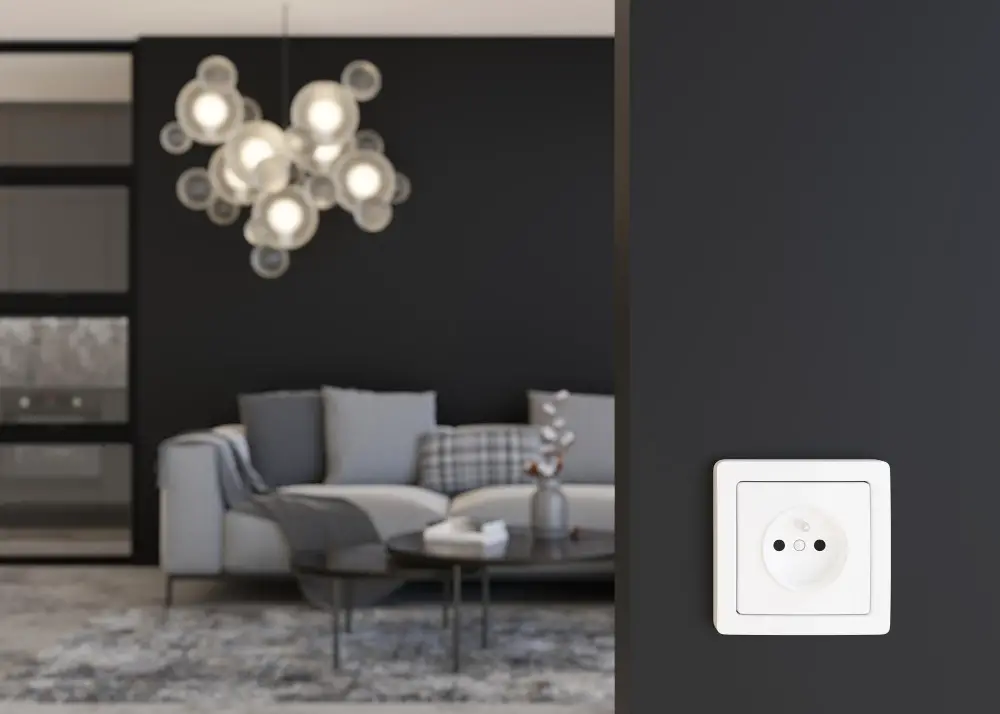
You don’t want to have cords running across the room or tripping hazards. Ideally, you should have an electrical outlet near where you plan on placing your TV so that you can easily plug it in without having to use extension cords.
If there isn’t an outlet nearby, consider hiring an electrician to install one for safety reasons. It’s also essential that any new outlets are installed correctly and up-to-code.
Another option is using cord covers or raceways which can help hide unsightly wires and keep them organized while protecting them from damage.
Interior Design Impact
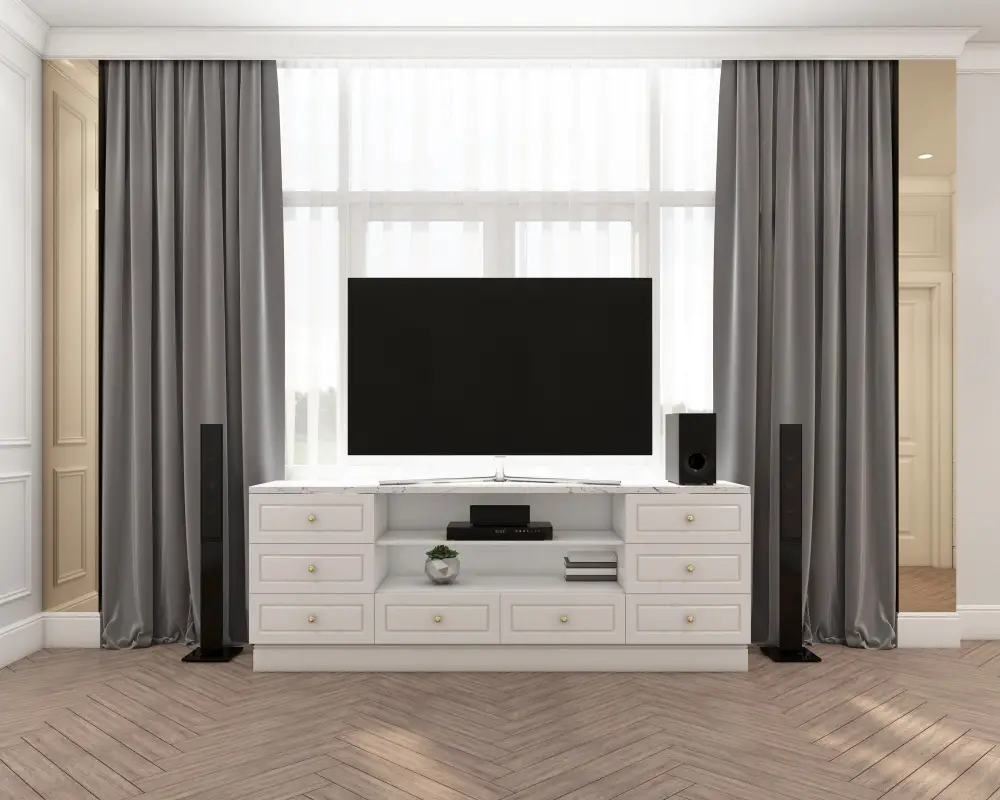
Placing a TV in front of a window may not be ideal for everyone, especially if you’re going for an aesthetically pleasing space. However, with some careful planning and creativity, you can make it work.
One way to minimize the visual impact is by choosing slimline TVs that blend seamlessly into their surroundings. You could also consider mounting your TV onto an entertainment center or wall unit that incorporates shelving or cabinets around it.
Another option is to use curtains or blinds as part of your interior design scheme. By selecting window treatments that complement other elements in the room such as furniture upholstery or accent colors on walls and accessories like throw pillows – you can create harmony between all aspects while still enjoying watching television from this location.
Effect On Room Layout and Flow
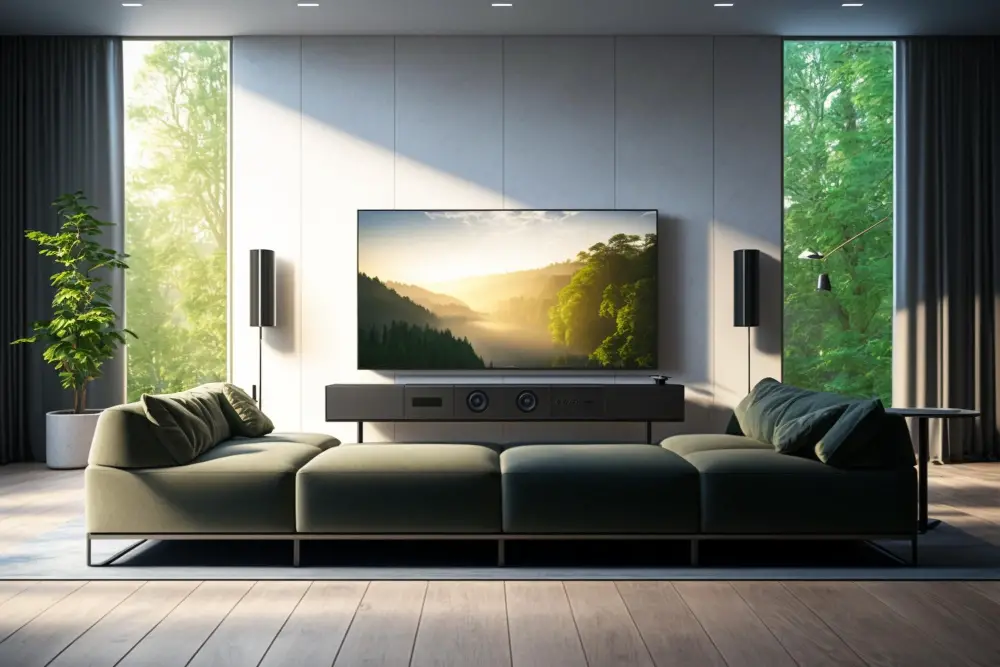
It’s important to consider how this placement will affect the functionality and aesthetics of your space. For example, if you have limited wall space, placing your TV in front of a window may be necessary but it could also make the room feel cramped or cluttered.
On the other hand, if you have ample wall space available for mounting or positioning your TV elsewhere, it might be best to avoid putting it in front of a window altogether. This way you can maintain an open and spacious feel throughout the room.
When considering how placing a TV in front of a window will affect your room layout and flow, take into account factors such as furniture arrangement, traffic patterns through the area where both windows are located (if there are more than one), natural light sources that may interfere with viewing quality at certain times during day/night hours etc.
Custom Entertainment Center Options
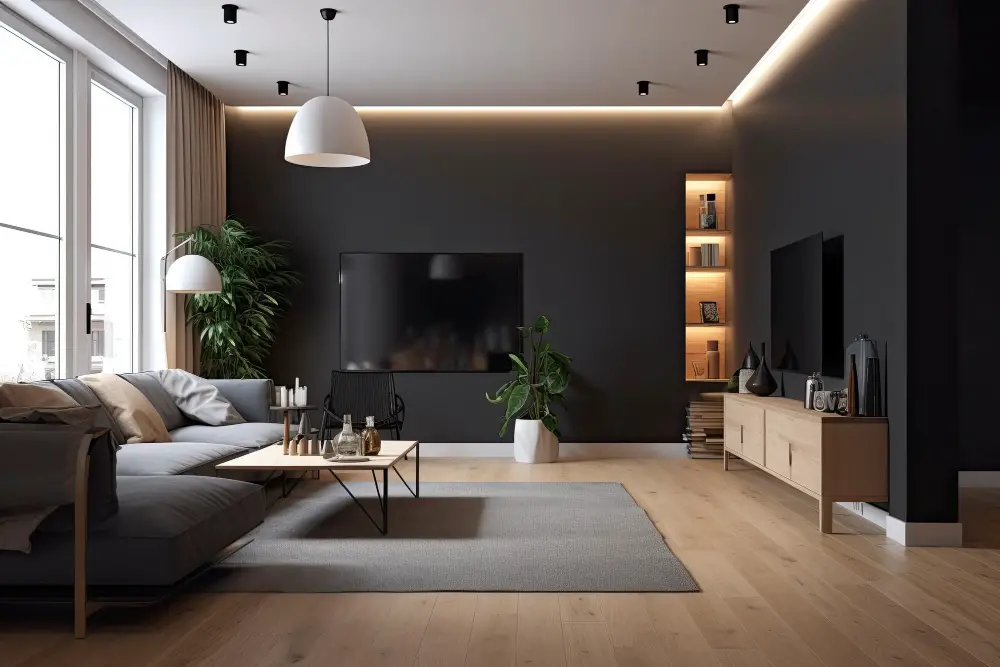
One such option is a custom entertainment center that can be designed and built specifically for your space. A custom entertainment center can provide ample storage for all of your media devices while also serving as the focal point of the room.
When designing an entertainment center, it’s important to consider factors such as size, style, and functionality. You’ll want to ensure that it fits seamlessly into the overall design aesthetic of your home while also providing enough space for all of your electronics.
A professional carpenter or furniture maker can help you create a one-of-a-kind piece that meets all of these requirements and more. They will work with you every step along the way from initial consultation through final installation ensuring everything is perfect before they leave.
Alternatives to Window Placement
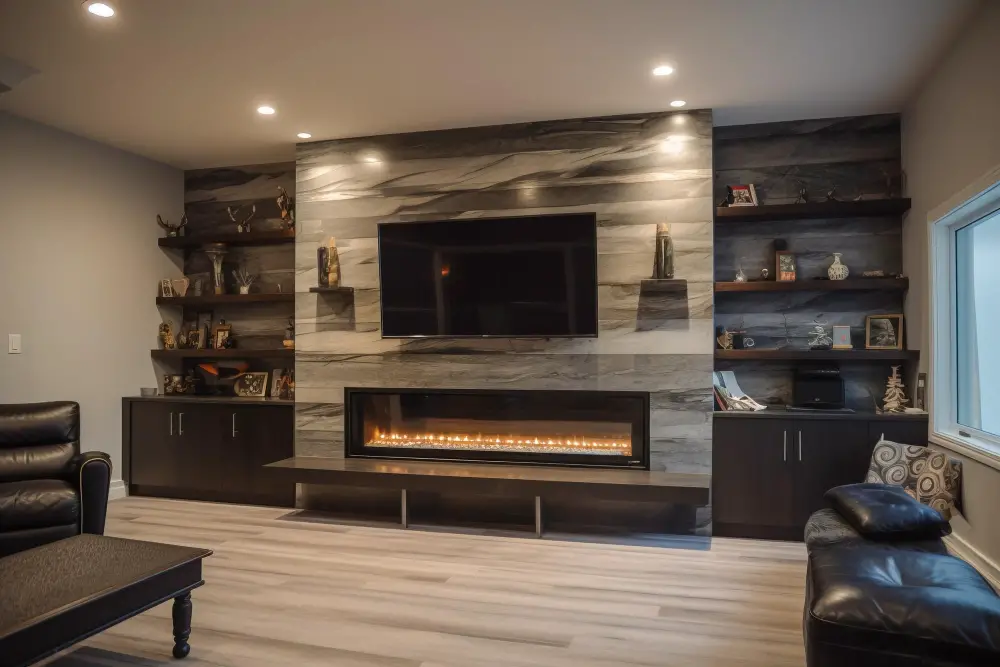
One popular alternative is mounting the TV above a fireplace or on an empty wall. This can create a focal point in the room and free up space for other furniture.
Another option is to place the TV on a stand or console table against an interior wall. This allows you to position it at eye level and avoid any glare from windows.
If you have limited space, consider investing in a projector instead of a traditional television set. Projectors can be mounted on ceilings or walls and provide large-scale viewing without taking up much floor space.
Ultimately, when deciding where to place your TV, it’s important to prioritize both functionality and aesthetics while considering all available options beyond just putting it directly in front of windows.
Alternative TV Locations
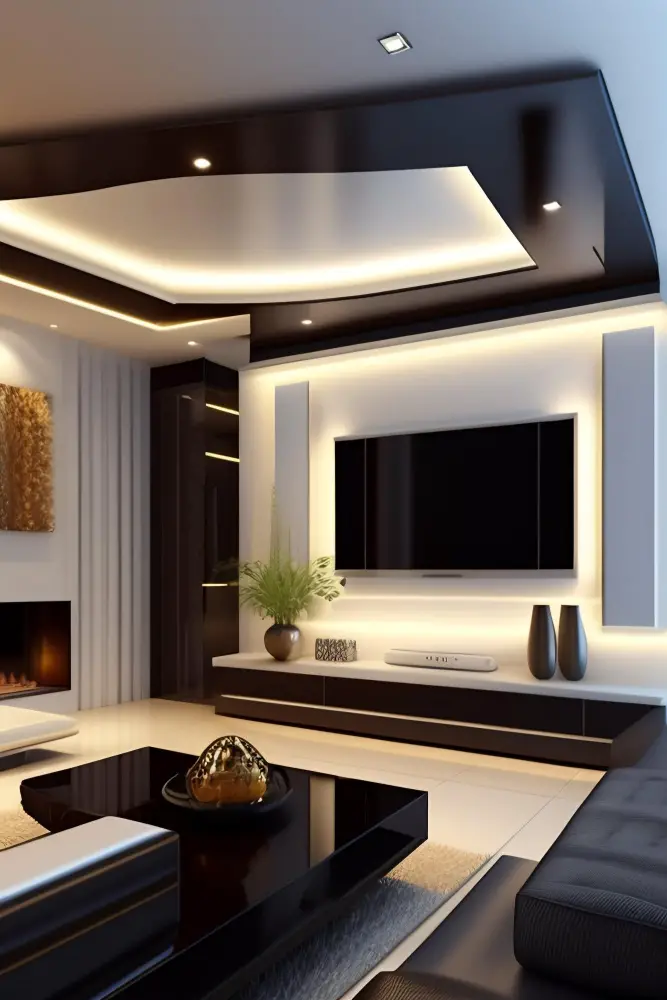
One popular choice is mounting the TV above a fireplace or on an empty wall. This can create a focal point in the room and free up floor space for other furniture.
Another option is to place the TV inside an entertainment center or cabinet with doors that can be closed when not in use. This keeps it out of sight and protects it from dust and damage.
If you have limited wall space, consider using a ceiling mount or installing the TV on a mobile stand so you can move it around as needed.
Ultimately, choosing where to place your TV depends on various factors such as room layout, personal preference, and viewing habits.
FAQ
Is it better to put a TV in front of window?
Generally, it is best to avoid placing a TV in front of a window to reduce glare and prevent light from shining on the screen, especially if the window faces west.
How do you put a TV in front of a window?
To put a TV in front of a window, ensure that you install opaque, room-darkening blackout shades to cover the window and minimize glare, which can hinder optimum viewing and cause eye strain.
Where should a TV be placed in a room with windows?
A TV should be placed away from high-traffic areas and at an angle where sunlight from the windows won’t cause a glare on the screen in a room with windows.
Can TV be placed opposite a window?
It is generally not recommended to place a TV opposite a window, as it can cause glare and hinder the viewing experience, particularly if the window faces west.
What are the potential drawbacks of placing a TV in front of a window?
Potential drawbacks of placing a TV in front of a window include glare on the screen, reduced visibility, and possible damage due to direct sunlight exposure.
How can you minimize glare and reflections when positioning a TV near a window?
To minimize glare and reflections when positioning a TV near a window, place the TV perpendicular to the window and use blinds or curtains to control sunlight.
What alternative TV mounting options are available in a room with multiple windows?
Alternative TV mounting options in a room with multiple windows include ceiling mounts, corner mounts, or using a TV stand.
Recap
